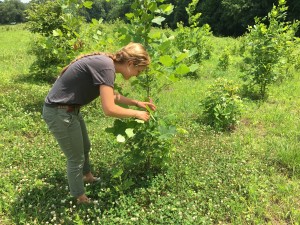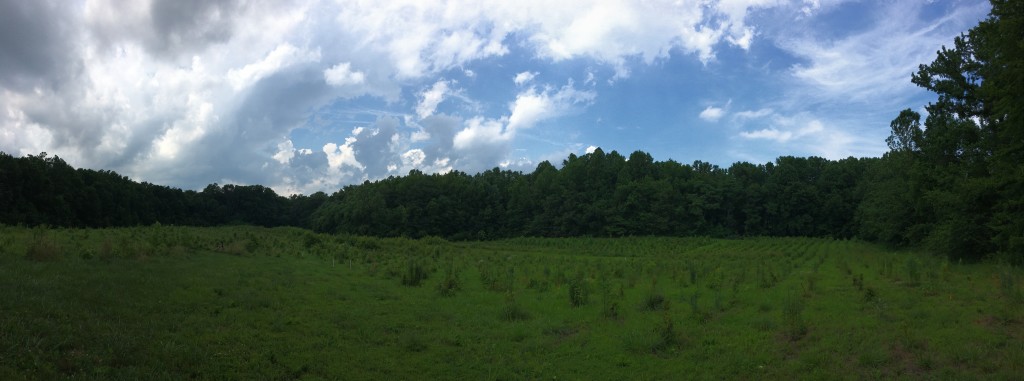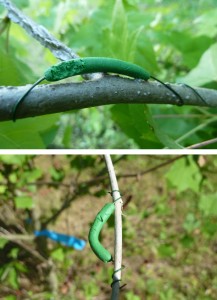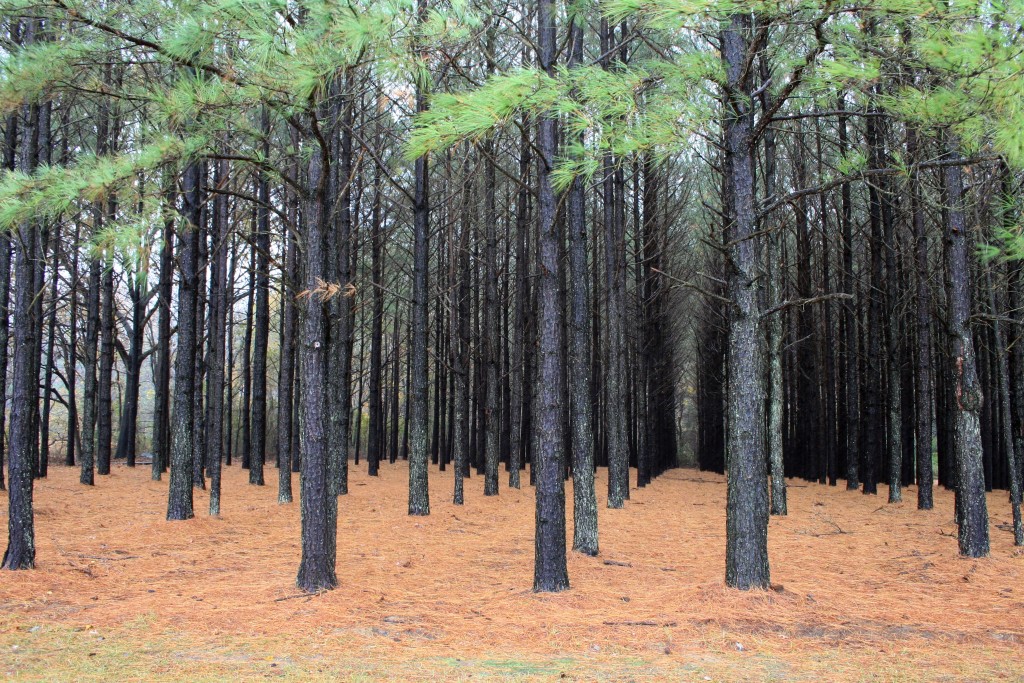by Emily Li

Anna Nordseth, a summer intern for the Smithsonian Environmental Research Center’s Terrestrial Ecology Lab, wasn’t surprised to be taking work home the first week and a half of her internship. What she wasn’t expecting was to be making nearly a thousand clay caterpillars.
Each caterpillar began life as a half gram of green clay, with a wire spine and ends rolled into a worm-like silhouette. By the time Nordseth had finished—several podcasts and three seasons of House of Cards later—she had 900 caterpillars and the hand cramps to prove it. But she was ready to begin her research.
Playing with predator’s food
A major part of the Terrestrial Ecology Lab’s research investigates how biodiversity affects ecosystems. Specifically, Nordseth is looking into how tree diversity shapes predator-prey interactions in the forest. The Smithsonian Environmental Research Center (SERC) provides the forest through BiodiversiTREE—an experimental woodland with over 20,000 trees planted across SERC property in plots of various diversity, spearheaded by Nordseth’s supervisor, Dr. John Parker. Nature provides the predators that have moved in since the trees were planted in 2013. The last ingredient—prey—is where Nordseth’s caterpillars come in.

Among BiodiversiTREE’s 75 plots, she chose 30 plots, six trees per plot, and placed five caterpillars in each tree. After positioning the caterpillars in the trees, she surveyed them regularly, recording any damage marks. Now, she’s working to identify the predators in question and use her data to compare predation patterns among different plots.
“You can get it down to a coarse taxonomic identification,” Nordseth explained. “You can’t be like, ‘This type of bird attacked it,’ but you can say, ‘A bird attacked it’ or ‘A mammal attacked it.’”
It’s not the first time scientists have used clay caterpillars as decoys. The entire project has been replicated around the world—in other parts of the U.S., Australia, Southeast Asia, Panama, and Germany. Together, these experiments paint a picture of how tree diversity affects predation globally. Generally, these studies have lent increasing evidence for the enemies hypothesis, which proposes that more plant diversity provides a better environment for more predators, which limit the number of herbivores and thus reduce plant damage. But most of the research has been conducted in agricultural settings. The pattern hasn’t been demonstrated extensively in forests—yet.

Food chain forensics
Nordseth still has a ways to go before she can draw any definitive conclusions. She’s in the process of analyzing data, but it’s not easy to determine what predation looks like in every circumstance. Like humans, some animals are messier eaters than others.
“Sometimes it’s super clear—you just see a ‘V’ dented in, and you can tell that a bird came and took a bite out of it,” Nordseth explained. “But in real life it’s not always that clear-cut.”
BiodiversiTREE also provides a unique kind of forest environment. Because the ecosystem is an experiment arranged by humans, it’s a useful setting for manipulating and observing specific variables. At the same time, the weeding and mowing of the plots could make it a less accurate reflection of natural forest growth. Nordseth, however, maintains that her project accounted for this.
“The whole point isn’t to model this entire ecosystem. We just want relative rates of predation in all these different plots,” said Nordseth. “We’re simplifying things down, but we’re still able to get an idea of the general trends, which is what we want.”
Already Nordseth has noticed an unusual pattern. While she expected to see bird and insect damage, her surveys turned up many cases in which caterpillars had been gnawed around the ends—a sign that an unanticipated number of rodents have been rising to the bait.
The color of the forest’s money
Anyone who’s mistaken raisins for chocolate chips might feel bad for the predators—even the rats—expecting a meal and ending up with a mouthful of non-toxic clay. But the experiment could have tremendous benefits for people. For timber plantations routinely affected by pests, the right findings could support a financial argument for increased plant diversity.

“The economic side of things motivates people,” Nordseth said. “We’re looking at it as restoration in the best way possible—keeping as many of these ecosystem links in place, and restoring as many of these links in the ecosystem as possible.”
And it’s not just timber plantations that might benefit. While talking money is one of the easiest ways to get people to listen, Nordseth believes her project could also lend support to other reasons why plant diversity is worth preserving, from aesthetic appeal to birdwatching.
“It’s just looking at diversity from different angles,” said Nordseth. “It’s more support for biodiversity, and for maintaining and restoring areas with more biodiversity.”
Photo of pine plantation used under Creative Commons license from USDA National Resources Conservation Service.

